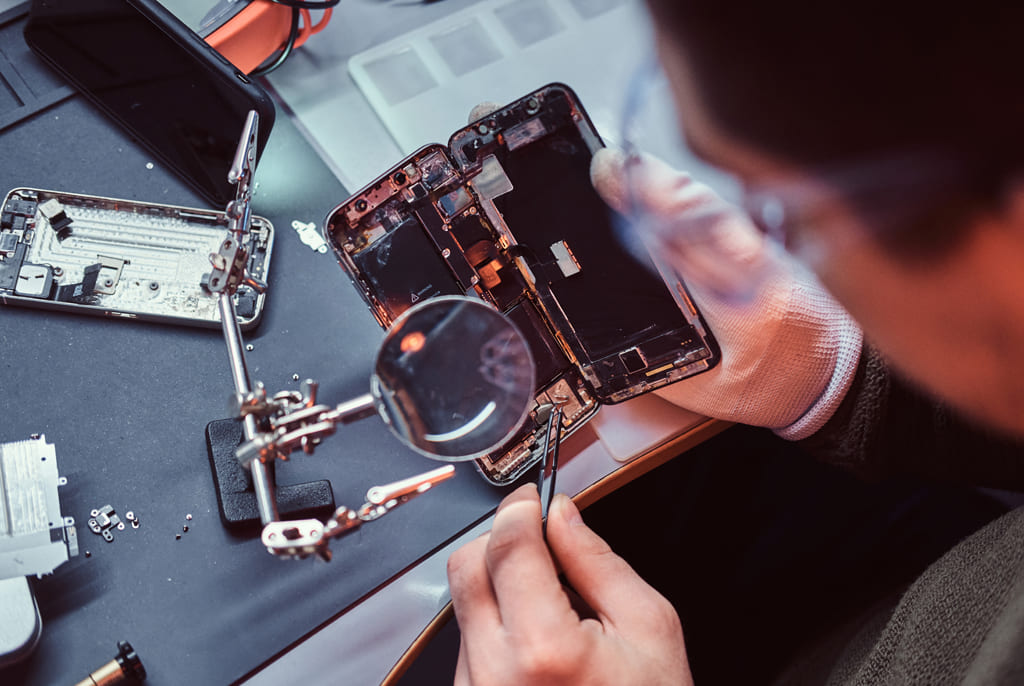The Latest Trends in iPhone Repairs: What Every Owner Should Know
If you’ve been into device repairs as long as I have, you know how fast iPhones evolve—both in design and in how we fix them. From modular parts to AI diagnostics and sustainability, the repair landscape is transforming. Here’s what’s happening now—and what it means for you.
1. Smarter Diagnostics: AI to the Rescue
We’ve moved beyond guesswork. Today’s shops use AI-powered diagnostic tools that can spot screen, battery, or logic-board issues faster and more accurately than ever before. These systems analyze usage patterns and error symptoms to speed up repairs and even flag potential failures proactively.
2. Micro-Soldering & Laser Repairs: Component-Level Precision
iPhones keep getting tinier and more intricate. Regular part swaps don’t always cut it anymore:
Micro-soldering lets us repair tiny circuits—like power ICs or charging ports—without discarding the entire board.
Laser tools now make back-glass replacements faster and safer, preserving the phone’s aesthetics intact.
3. DIY Repair Kits & the Right-to-Repair Push
It’s not just shops anymore; consumers are getting empowered too:
DIY repair kits—complete with tools, parts, and guides—are now mainstream. Ideal for critical fixes like battery or screen swaps.
The Right-to-Repair movement is gaining legal traction globally. Laws are slowly forcing manufacturers to provide spare parts, manuals, and tools. Oregon recently banned practices like part-pairing that make independent repairs impossible.
4. Going Green: Sustainability Meets Repairs
Environmental concerns are shaping choices:
More repair centers are using refurbished parts, promoting repairs over replacements, and recycling old components.
Companies are proudly touting eco-friendly practices in a market that increasingly wants sustainability.
5. On-Site & Remote Repairs: Convenient & Efficient
The future of fixing phones is flexible:
On-site repair services bring the tools and parts to your home or office—no hassle, no waiting.
Remote repair is also growing. Techs can walk you through software issues via video call or apps, sometimes even fixing them remotely.
6. Parts & Refurbishment: Apple Expands Its Reach
In India, Apple has tapped Tata Group to manage iPhone and MacBook repairs, moving complex after-sales service into Tata’s assembly facilities. This may pave the way for Apple to sell refurbished devices directly in major markets.
7. Trending: Battery Swaps & Self-Service Tools
Rising repair costs and tariffs have people holding onto their iPhones longer:
Replacing a battery is often cheaper than upgrading—the typical battery replacement runs around $69 and can breathe years back into older models.
Apple’s Self-Service Repair program lets you buy official parts and tools, with built-in support like iOS 18’s Repair Assistant to ensure authenticity.
Quick Trends Overview
| Trend | Benefit for You |
|---|---|
| AI Diagnostics | Quicker, more accurate fixes |
| Micro-Soldering & Laser | Precise, less invasive hardware repairs |
| DIY Kits & Right-to-Repair | Empowered users, lower costs, legal access to parts |
| Sustainable Repair Practices | Eco-friendly, wallet-friendly service options |
| On-Site & Remote Repair | Ultimate convenience and flexibility |
| Apple/Tata Repair Expansion | More access to quality refurbished devices |
| Battery Swaps & Self-Service | Cost-effective extend-your-phone solutions |
The Bottom Line
iPhone repair isn’t what it used to be. From AI-backed diagnostics and eco-conscious workflows to remote support and legislative wins for repair accessibility—everything’s priced for efficiency and convenience. Whether you want to save time, save money, or keep your device alive longer, these trends are making it easier than ever.
If any of this sounds new or daunting, don’t worry. I’ve been walking people through these exact updates in my work, one device at a time. Reach out—I’ll help you repair smarter, not harder.


